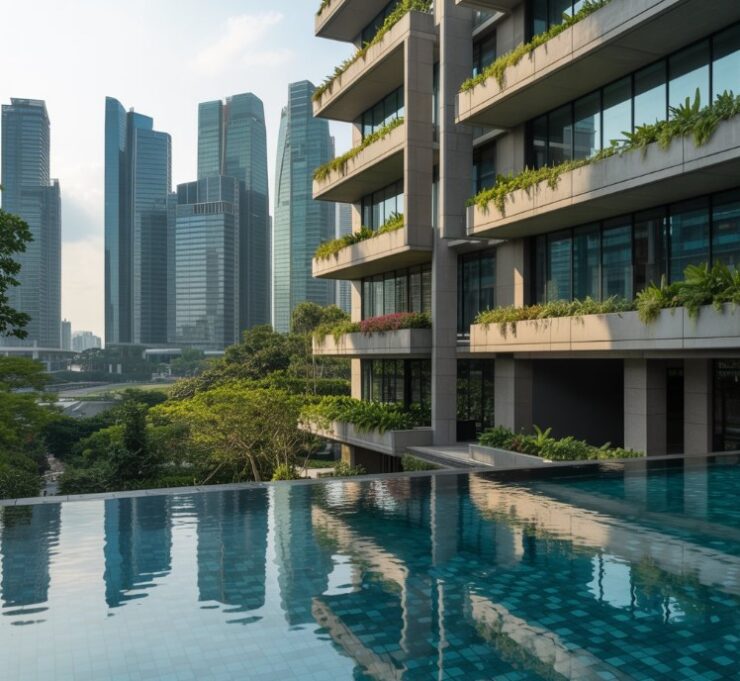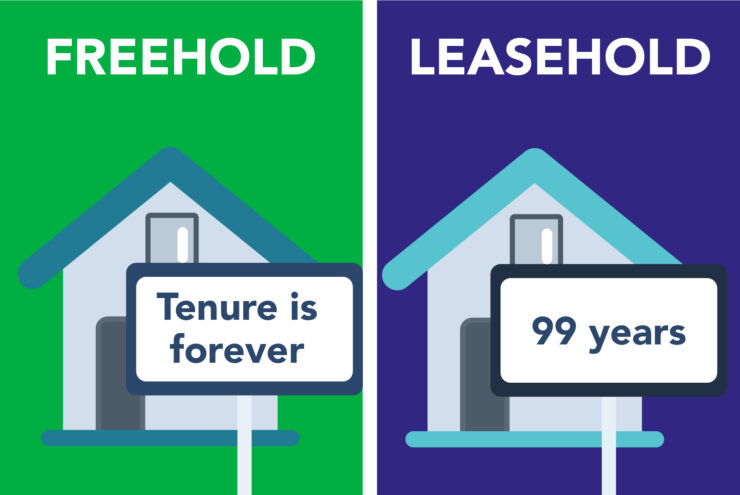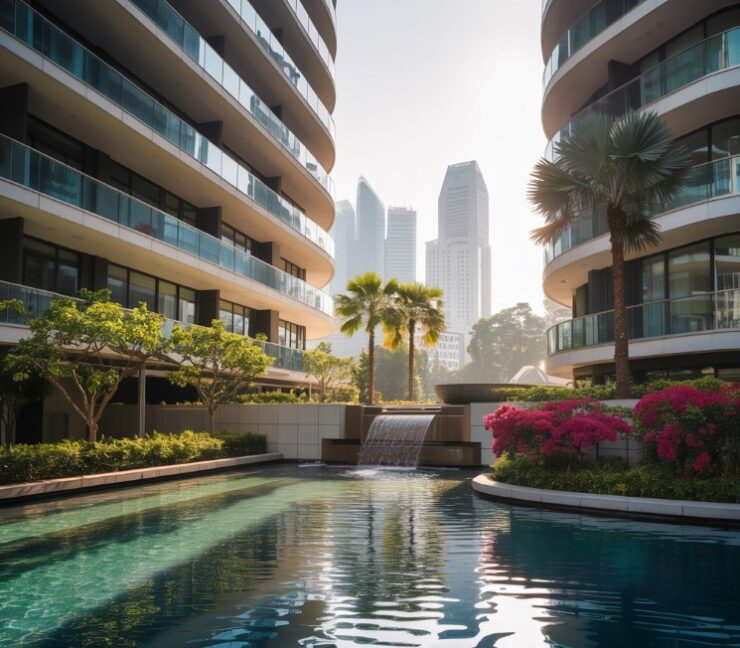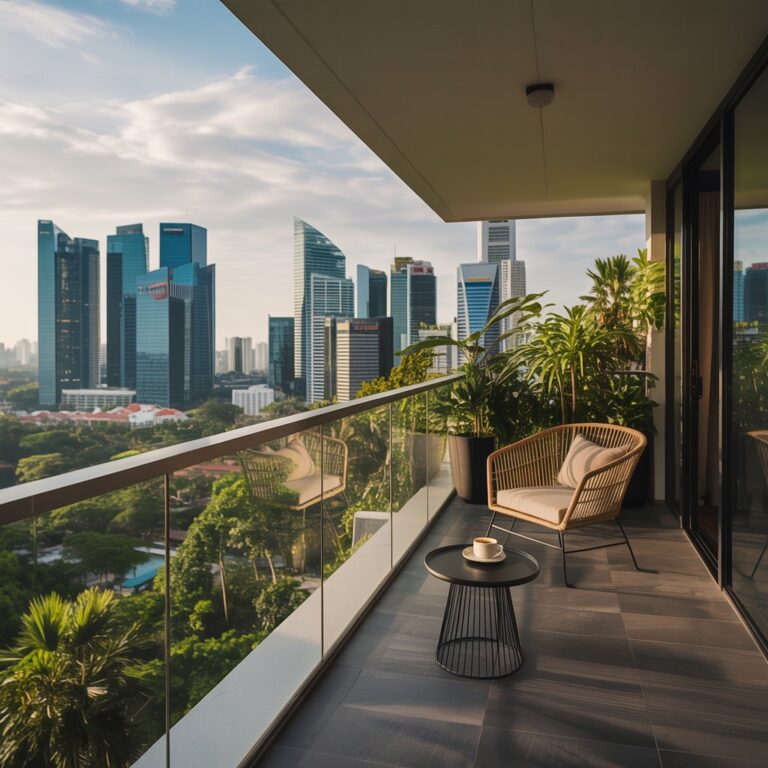Singapore’s condo market is one of the most structured in the region, yet navigating it as a buyer can still feel overwhelming. With hundreds of projects across the island, each offering different configurations, pricing models, and amenities, it’s important to know what matters and why. Whether purchasing for personal stay or as an investment, this guide walks through the key considerations in selecting the right condo in Singapore today.
Key Highlights
- Different condo tiers suit different lifestyles and budgets, from OCR family-focused units to CCR luxury addresses.
- Accessibility includes more than MRT proximity—lifestyle and service convenience matter too.
- Freehold vs leasehold, launch timing, and unit layouts significantly affect long-term value.
- Developer history and project scale directly impact living experience and resale potential.
- Buyers must assess their personal timeline, whether for own-stay stability or shorter-term capital appreciation.
- Projects like Penrith and Faber Residence represent modern benchmarks in form, function, and future growth potential.
Understand the Categories: Not All Condos Are Built the Same

Singapore’s private condominiums are grouped by region and intent. This classification helps set expectations around pricing, demographics, and nearby developments. Here’s a breakdown of the three main condo types:
| Condo Category | Location | Target Buyers | Price Range (per sq ft) | Common Features |
| Mass-Market (OCR) | Suburban (e.g. Yishun, Punggol) | First-time buyers, families | S$1,400 – S$1,800 | Functional layouts, basic condo amenities |
| Mid-Tier (RCR) | Fringe areas near city (e.g. Toa Payoh, Queenstown) | HDB upgraders, professionals | S$1,900 – S$2,600 | Enhanced landscaping, proximity to MRT |
| Luxury (CCR) | Prime districts (e.g. Orchard, Newton) | Investors, high-income buyers | S$2,800 – S$4,500+ | Concierge services, premium finishes |
Choosing your category comes down to what you need and can sustain. It’s also crucial to factor in property taxes, maintenance fees, and resale timelines based on the region’s demand cycles.
Picking the Right Location: It’s More Than Just a Dot on the Map
Traditionally, the location was measured by how close the unit is to the MRT station or the Central Business District. Today, that metric has evolved.
Yes, MRT proximity still matters, but so do the following:
- Lifestyle infrastructure: Malls, supermarkets, eateries, parks.
- Educational clusters: Popular condos are often near top schools, and this impacts demand.
- Healthcare and wellness: Accessibility to clinics, GPs, and fitness facilities.
- Redevelopment potential: Areas marked under the URA Master Plan for transformation (e.g. Greater Southern Waterfront) often carry long-term upside.
This is why Penrith stands out. Located in a maturing and well-connected part of Singapore, it balances peaceful residential surroundings with strong development potential. For buyers who value both daily convenience and long-term growth, a project like Penrith is worth a closer look.
Freehold or Leasehold: Debunking the Value Assumption

Many buyers believe freehold is always better—but this isn’t universally true.
Freehold Properties:
- Retain value over time and may offer a longer window for resale.
- Tend to be priced higher upfront.
- Less supply, often older projects with fewer facilities.
99-Year Leasehold Properties:
- Often newer with better design, facilities, and community living.
- More affordable for buyers in mid-income brackets.
- Depreciate faster after 30-40 years if not well maintained or located.
For those with a long horizon and capital buffer, freehold may provide peace of mind. But in practical terms, a well-located leasehold with modern amenities often sees better rental yields and resale volume in the first 20 years.
Buying New Launch vs Resale: A Lifestyle and Financial Equation
Should you opt for a brand-new unit or consider a resale? It depends on your timeline, flexibility, and expectations.
New Launch Benefits:
- Modern layouts and latest amenities.
- Progressive payment schedule (great for younger buyers).
- First-mover advantage in pricing during Phase 1 sales.
Resale Advantages:
- See what you get—view actual unit and surroundings.
- Immediate move-in possible.
- More room to negotiate pricing.
Buyers who need to move in within 6–12 months may find resale options more practical, especially if they’ve sold their existing home. However, investors willing to wait 3–4 years for TOP may benefit from price growth between launch and completion.
Evaluate the Developer and Project Track Record
Not all developers are equal. Look beyond brochures and showflats. Study the past performance of the company behind the project. Questions to ask:
- Have their past projects appreciated in value?
- Are there recurring issues reported by past buyers (e.g. defects, maintenance)?
- Do they deliver on time, and is their workmanship consistent?
Also, assess the scale of the project:
- Larger developments often have better shared facilities (lap pools, gyms, function rooms).
- Smaller boutique projects may offer more privacy, but fewer services.
Consider Your Long-Term Plans and Unit Layout
Beyond numbers and branding, think long-term. Are you buying this condo to live in for the next decade, or planning to exit in five years?
Layout Matters More Than Size
Today’s buyers often face compact unit sizes. That makes smart layouts essential. A well-designed 750 sq ft 2-bedroom unit can feel more spacious than a poorly configured 850 sq ft one.
Look for:
- Functional kitchen-to-living flow.
- Bedrooms with usable wardrobe space.
- Natural light in all main rooms.
- Avoid long corridors and wasted areas.
For families or those planning for children, look for projects near parks or schools with larger 3- or 4-bedroom layouts.
A Balanced Example of Space, Nature, and Connectivity
Some projects quietly hit the right note between form, space, and future value. Faber Residence is one such development. Set near the lush Western region, it blends greenery with accessibility. Its proximity to the Ulu Pandan Park Connector and expressways makes it ideal for residents who want space without isolation.
Faber Residence is also an example of how mid-sized developments can still offer high livability through smart planning, rather than size alone. For buyers who aren’t drawn to high-density living, this type of project offers a refreshing option.
How Condo Prices Shift Based on Tenure and Location
Here’s a simplified visual to help guide expectations:
Note: Prices are illustrative based on general 2024–2025 trends and vary by location and condo type.
This comparison highlights how freehold values tend to hold over time, while leasehold properties experience sharper depreciation past the 20-year mark—especially if they lack location advantage.
Don’t Rush the Process

Choosing the right condo in Singapore today is about aligning your goals with what the market offers. Focus on what’s functional, not just fashionable. Think about who you’ll be in 5 or 10 years, and whether your choice today still serves that version of you.
Use showflat visits wisely. Ask about developer track records. Compare per-square-foot prices with surrounding properties. And above all, take your time—because a good condo isn’t just a place to live; it’s a long-term decision that will shape your lifestyle and finances for years to come.

